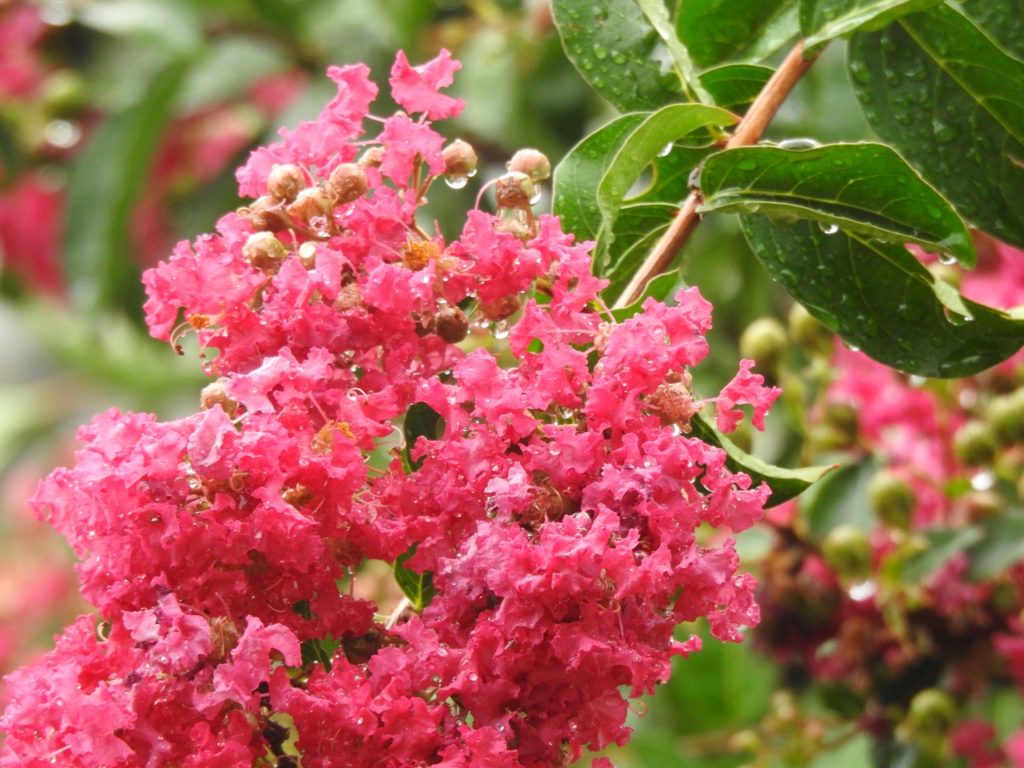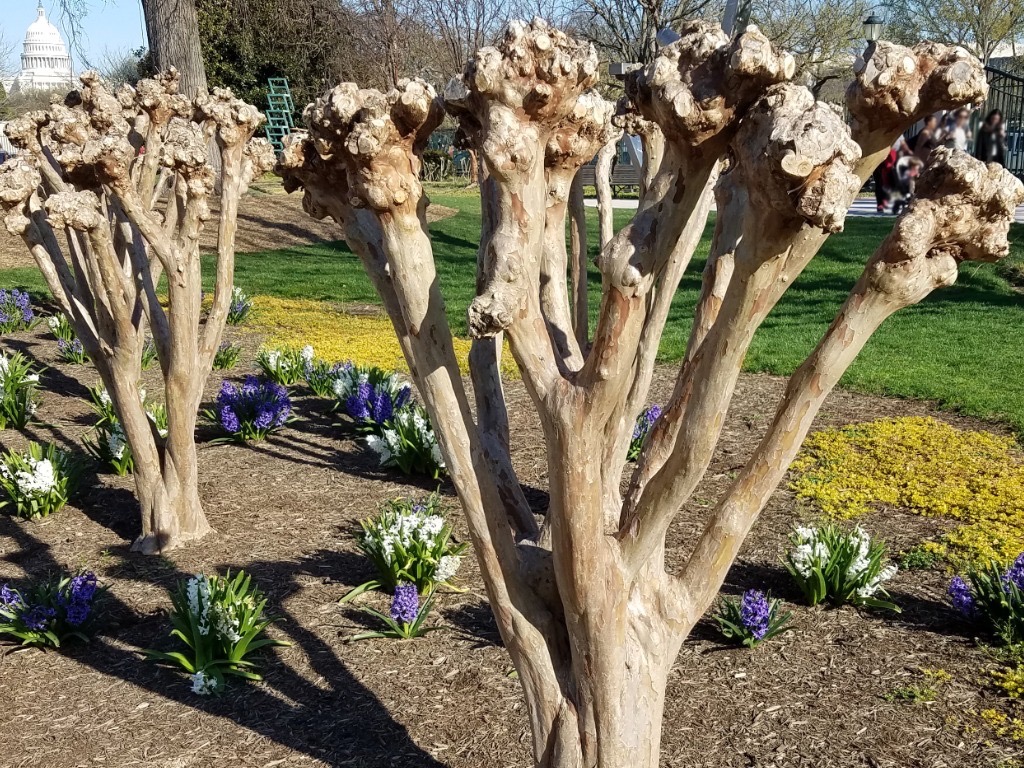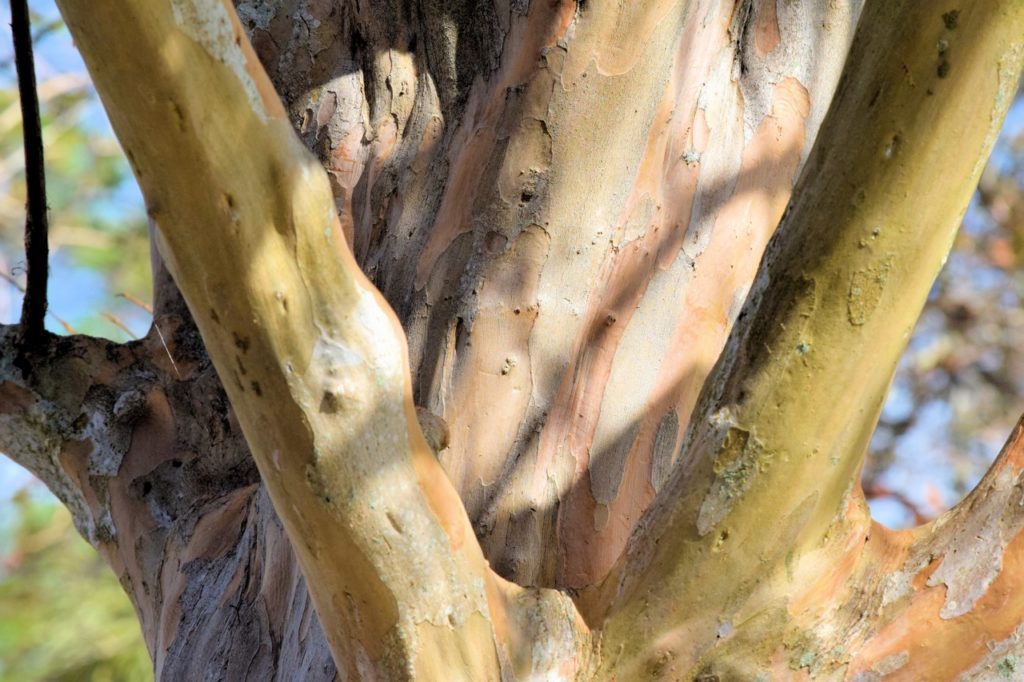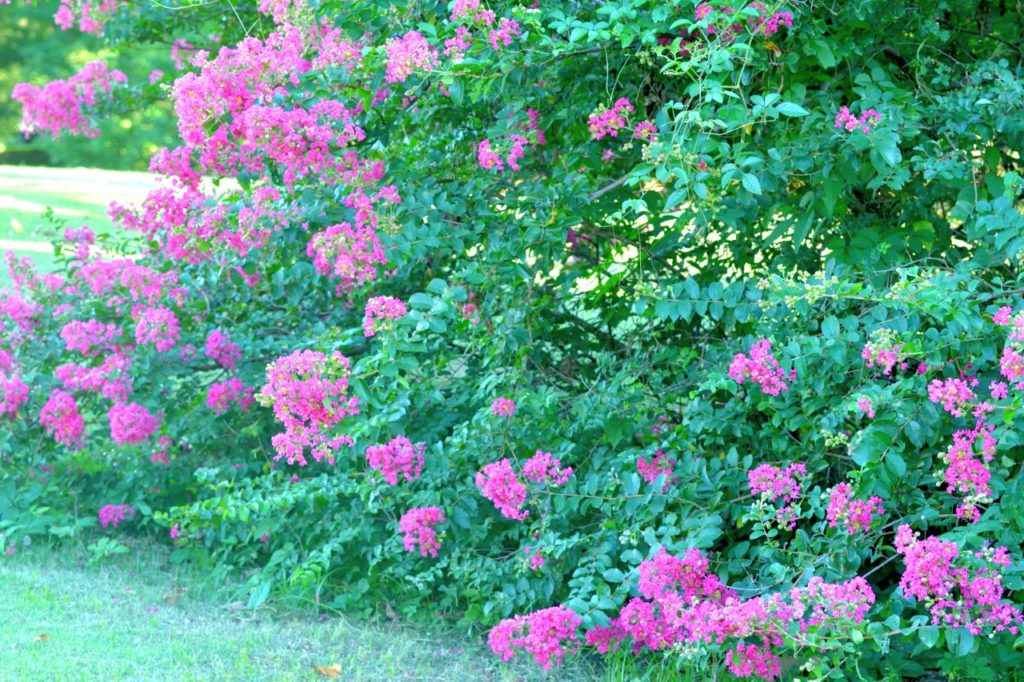TREES > CRAPE-MYRTLE

Elizabeth is a Permaculture Garden Designer, Sustainability Consultant and Professional Writer, working as an advocate for positive change. She graduated from the University of St. Andrews with an MA in English and Philosophy and obtained a Diploma in Applied Permaculture Design from the Permaculture Association.
Reviewed By COLIN SKELLY

Colin is a Horticulturist and Horticultural Consultant with experience in a range of practical and managerial roles across heritage, commercial and public horticulture. He holds the Royal Horticultural Society’s Master of Horticulture award and has a particular interest in horticultural ecology and naturalistic planting for habitat and climate resilience.
IN THIS GUIDE
CRAPE MYRTLE GUIDES
‘Crape Flower’ or ‘Crape Myrtle’ is an attractive shrub or small tree which has attractive flowers in the summer and early autumn.
Crape myrtle or crepe myrtle is the common name for Lagerstroemia species.
The Lagerstroemia genus contains 48 species of trees and shrubs which are native to southeast Asia and northern Australia.1Lagerstroemia L. (n.d.). Kew Royal Botanical Gardens. Retrieved May 15, 2023, from https://powo.science.kew.org/taxon/urn:lsid:ipni.org:names:25461-1#children
These plants are common in landscaping and horticulture in warmer temperate climes.
Overview
| Botanical Name | Lagerstroemia indica |
| Common Name(s) | Crape Myrtle / Crape Flower |
| Plant Type | Tree / Shrub |
| Native Area | India, South-East Asia, Northern Australia |
| Hardiness Rating | H3 |
| Foliage | Deciduous |
| Flowers | Crinkled crepe-like pink, purple or white flowers |
| When To Plant | June-September |
| When To Prune | December-February |
Sunlight
Preferred
Full Sun
Exposure
Sheltered
Size
Height
4 – 8M
Spread
4 – 8M
Bloom Time
Summer / Autumn
Soil
Preferred
Chalk, loam or sand
Moisture
Well-drained
pH
Any
The most commonly used species is the common crepe myrtle, Lagerstroemia indica.
Though this plant may not be ideally suited to the cooler climate and growing conditions in the UK, L. indica has an RHS Award of Garden Merit, suggesting it can be grown suitably in these climes.

It is a fairly good choice for coastal gardens or gardens in other milder southern areas.
Why Grow Crape Myrtle?
Crepe myrtle will be a good choice for only very sunny and protected gardens.
However, where they do set flower, they can be very attractive ornamental plants.
The pink, purple or white flowers, crinkled somewhat like crepe fabric, are borne in summer and early autumn on large, bold panicles up to 20cm long.
They will grow up to 4-8m in height with a similar spread.
Typically, in the UK, they only grow to the lower end of that range due to the cooler conditions.

As well as being prized as ornamental plants for their flowers, crape myrtle also offers interest throughout much of the year.
These plants are also prized for their healthy lush foliage in spring, which may emerge red with some varietals.
In summer, the flowers bring a pop of colour and yet even after they fade, these plants can also have amazing autumn foliage, with gold, yellow and orange hues.
Even in winter, these plants can have some ornamental appeal, with interesting peeling bark in a greyish-orange colour which flakes off to reveal a smoother underside.
Where To Grow
Crape myrtle requires a warm, sheltered and sunny spot.
It is H3 hardy, but they do become hardier as the wood ripens in the sun and the plants become established.
In fact, dormant plants can potentially be hardy down to around -10°C if the wood is well-ripened.
However, this is a plant which will usually require the protection of a sunny south-facing wall to flower successfully in the UK, and the flowering will usually only be successful in the UK during warm summers, even in the south.
“Lagerstroemia indica is most suited to coastal climates in southern Britain or a sheltered garden in urban areas,” adds Master Horticulturist Colin Skelly.
“These locations will be substantially warmer in winter and more benign for young L. indica trees.
“If grown in more northerly or inland locations, care will have to be taken to protect plants during the coldest winter weather.”

Where outdoors conditions are not suitable, crape myrtle might be grown in a large container under glass, as long as the conditions are light and bright enough as these plants cannot grow in shade.
Whether growing in the ground or in a container, crape myrtle will require free-draining conditions.
Generally, it can be tolerant of a range of different soil types and soil pH levels but will tend not to do quite so well in heavily alkaline soils.
It can grow in nutritionally poor soils and is relatively drought-tolerant once established.
Crape myrtle roots spread out a long way, but they are not invasive or strong, so can sometimes be good choices for planting near paving, paths or driveways.
How To Plant Crape Myrtle
Unfortunately, crape myrtle does not transplant well, so plants are usually purchased as large specimens with well-developed root balls.
Plants can be purchased and planted in late spring or early summer, as soon as all risk of frost has passed in your area.
If you have seen an amazing crape myrtle in a friend’s or neighbour’s garden, you might also be able to get a plant of your own by taking cuttings.

Crape myrtle does not usually set seed successfully in the UK, but the plants can be propagated by means of softwood cuttings taken in late spring, or by means of semi-ripe cuttings (given some bottom heat in a propagator) in the summer months.
Dwarf cultivars and other smaller cultivars to be grown indoors or moved undercover during the winter months are best planted in late spring or early summer too.
These should be placed in a container with good drainage, in a multipurpose peat-free growing medium with added grit.
Ongoing Plant Care
Watering
Crape myrtle grown outdoors in a suitable spot is fairly drought tolerant once established, but it will require regular watering until established.
Although they need free-draining conditions, moist soil will be best for speedy growth.

Try to make sure that soil remains moist throughout the year while avoiding the creation of waterlogged conditions.
Remember that if you are growing crape myrtle in a container, you will need to water it more frequently, especially over the summer months.
Feeding
When growing in the ground, crape myrtle will not require regular feeding.
The addition of organic mulch around the base of the tree or shrub each spring should provide sufficient fertility.

However, in containers, it may be beneficial to feed your plant with an organic liquid plant feed which is balanced in the spring, and a potash-rich feed in the summer to promote flowering.
Overwintering
A thick carbon-rich mulch can help to protect plant roots in winter.
As borderline hardy plants, crape myrtles not brought indoors or under cover may also need to be protected with a covering such as horticultural fleece when heavy frosts threaten, especially when they are fairly young and the wood has not ripened as much to improve hardiness.
Pruning
Crape myrtles are in RHS pruning group 1, which means they naturally form a well-branched framework and usually only need light pruning if they need any pruning at all.
Light pruning should be undertaken in the spring.
However, these plants are tolerant of harder pruning if required.

Some gardeners traditionally hard-pruned crape myrtles in a process known as Crepe Murder.2Crepe Myrtle Pruning – Why, When, and How to do It. (2022, December 21). Trees.com. Retrieved March 14, 2023, from https://www.trees.com/gardening-and-landscaping/crepe-myrtle-pruning
Cutting a crape myrtle back very hard, and lopping off all the tops, encourages the shrub or tree to put energy into producing new branches and leaves rather than flowers.
This is said to give larger blooms the following season.
However, this practice is not recommended, for a number of reasons.

For one thing, larger flowers on new branches in profusion can cause them to droop and they may break.
For another thing, the knobbly growth this creates at the point where cuts were made makes the plant more susceptible to disease and can also look unsightly.
Also, fresh new growth is far less hardy than seasoned wood, so plants treated in this way are far less likely to make it through the winter in the UK climate, and you will miss out on the beauty of the older wood.
Companion Planting
If you are trying to create a Mediterranean-style garden, then a crape myrtle could be a good choice.

Crape myrtles work well with bougainvillaea, hibiscus, Mediterranean fruit trees, and a range of Mediterranean vegetables and herbs.
If you have a suitably sunny and warm garden, crape myrtle could be an attractive ornamental option to consider.
References
- 1Lagerstroemia L. (n.d.). Kew Royal Botanical Gardens. Retrieved May 15, 2023, from https://powo.science.kew.org/taxon/urn:lsid:ipni.org:names:25461-1#children
- 2Crepe Myrtle Pruning – Why, When, and How to do It. (2022, December 21). Trees.com. Retrieved March 14, 2023, from https://www.trees.com/gardening-and-landscaping/crepe-myrtle-pruning

